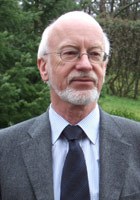Hartmut Ebke
Bilingual teaching in europe

objectives
The European Commission has repeatedly emphasized the importance of bilingual teaching when it comes to promoting multilingualism and intercultural skills, and has provided impetus for this, among other things in the Draft Council Resolution on a European strategy for multilingualism from October 2008. In it, EU member states are invited “to devote particular attention to the further training of language teachers and to enhancing the language and intercultural competences of teachers in general, in order to promote the teaching of non-linguistic subjects in foreign languages (CLIL)” (proposal 2f).Furthermore, a Eurydice study [1] makes express reference to the fact that bilingual teaching is more than simply a methodological tool to promote foreign language learning: “it seeks to develop proficiency in both the non-language subject and the language in which it is taught, attaching the same importance to each”. The objective, in other words, is an integrative approach in which equal justice is done to both elements. So what has happened in the meantime?
implementation status
The key findings of a study into the implementation of bilingual content teaching in Europe can be summarized as follows: many European countries – and the number is rising – are already implementing bilingual teaching concepts (between 3 and 30 % of schools). A broad range of models is used, from temporary use of the target language in suitable modules to a comprehensive school concept in which bilingual teaching has an established place and accounts for more and more lesson time as pupils progress through the school, with due credit being given to this fact in the pupil’s leaving certificate. International cooperation in projects and school twinning programmes are standard practice in the established model with a dedicated bilingual/CLIL stream at lower and upper secondary level.At the time the study was conducted, only Denmark, Greece, Portugal, Cyprus and Lithuania did not report any bilingual teaching. Traditionally, many countries in Southern Europe train teachers in only one subject. Consequently, there are not enough subject teachers with the necessary language skills, despite a broad implementation of bilingual teaching often being desirable. Some progress has been made in recent years, and now Lithuania for example does offer CLIL lessons. In Southern European countries in particular, tandem models involving the content teacher and a language teacher are additionally used as one solution, another being the application of lower language skill requirements. Accordingly, labelling something as CLIL does not necessarily equate to fully-fledged CLIL teaching.
In countries where teacher training programmes permit a combination of language and content, the conditions for the widespread introduction of CLIL are more favourable. However, this does not mean that such teachers can be deployed in CLIL settings without any further ado. For this reason, some countries offer prospective teachers additional training in didactics, including a final exam and certification.
languages in Bilingual lessons
Although English still widely predominates, models involving the EU’s other languages can also be found increasingly. In many cases, it is schools in border regions that use the CLIL concept to enhance skills in the neighbouring country’s language. This happens primarily in social science subjects, though to an ever greater extent also in the natural sciences as well as in sport, music and religious studies.Certification by CertiLingua
One project with a European dimension has set itself the goal of providing certification for high-quality multilingual, European and international skills: CertiLingua [2]. Schools in the participating European and non-European countries (for example all German schools abroad) can award the CertiLingua certificate – which is based on defined and uniform standards – together with the final secondary school leaving certificate. To achieve the CertiLingua certificate, pupils must have at least two foreign languages at B2 level of the Common European Framework of Reference for Languages, have taken at least 70 hours of bilingual classes in at least one non-language subject within the last two school years, and provide evidence of European/international skills by participating in a joint project with partners in the country where the target language is spoken. More information about this can be found in theconclusion
Bilingual teaching picks up on something that brain researchers have known for a long time: learning is successful and lasting when it motivates and is fun. The focus here is on abilities and the pleasure of using the language rather than on mistakes and failure. The popularity of schools that offer such opportunities is clear proof that pupils are “voting with their feet” for bilingual teaching.Literatur
[1] Eurydice, „Content and Language Integrated Learning (CLIL) at School in Europe“, Brüssel 2006.
[2] Näheres unter certilingua.net
about the Author
Areas of research focus:
Fundamental questions of language policy; the situation of bilingual teaching in Germany and Europe; concepts for introducing bilingual modules and setting up departments at schools with CLIL/EMILE; questions of certification in the German and European context, and especially the CertiLingua model (currently a member of the international advisory council); concepts for training of CLIL teachers; advising the Standing Conference of the Ministers of Education and Cultural Affairs of the Länder in the Federal Republic of Germany (KMK) and other countries on issues of bilingual teaching (including experience from similar activities for the Council of Europe).
